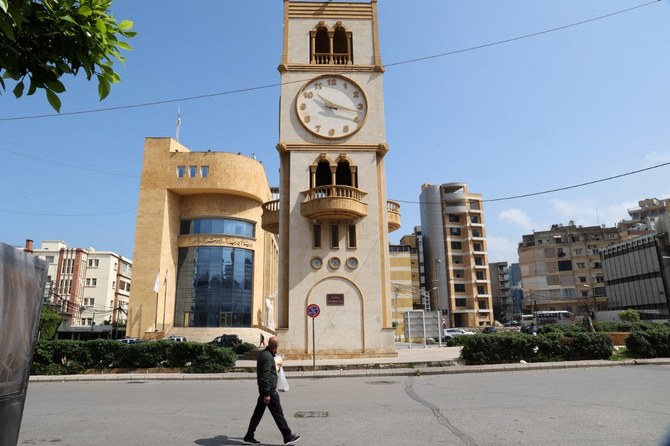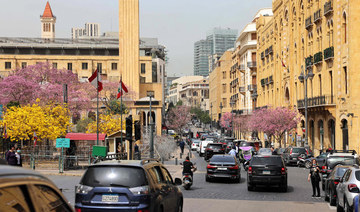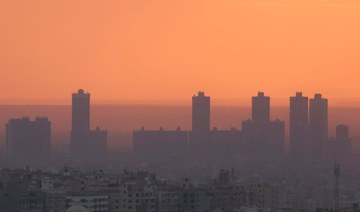LONDON: The Lebanese government’s decision to delay the start of daylight saving by a month has further divided the nation already crippled by medicine shortages, a severe financial crisis and rising corruption cases.
The decision on Thursday by caretaker Prime Minister Najib Mikati, to “exceptionally” postpone daylight saving to midnight on April 20 instead of March 25 has sparked dispute, with several politicians, businesses, citizens and even media outlets refusing to comply with the delay.
Gebran Bassil, leader of the Free Patriotic Movement, said in a tweet that the move was “not acceptable” and “carries obvious messages,” calling for appeals against it.
قصة الساعة ما بتنقبل ومعبّرة كتير بمعانيها … ما بيجوز السكوت عنها لحدّ التفكير بالطعن فيها او بعصيانها. GB
— Gebran Bassil (@Gebran_Bassil) March 23, 2023
Leaked footage of a conversation between Mikati and Parliament Speaker Nabih Berri prompted many to take to social media to either support or denounce the decision, at times using sectarian rhetoric.
In the video, which shows the two officials discussing daylight saving, Berri suggests that instead of shifting fast-breaking time to 7 p.m., it should remain at 6 p.m. “until the end of Ramadan.”
“This matter goes beyond daylight saving. It is an existential issue for us; the Christians of the East,” one Twitter user wrote.
القضية أبعد من توقيت صيفي وتوقيت شتوي. القضية قضية وجودنا كمسيحيين بالشرق.
— Azad (@Azad__8) March 25, 2023
Another person said he has already advanced his clocks “so that Lebanon continues to resemble us and every patriot, whether Christian or Muslim.”
أنا قدمتها من هلأ تيضل #لبنان يشبهنا ويشبه كل واحد وطني مسيحي أو مسلم
— David (@a_mnaqysh) March 25, 2023
Others found this an occasion for dark humor. Lebanese journalist Jad Ghosn tweeted: “Starting tomorrow, appointments should be (scheduled) according to either LBC or NBN,” in reference to the two Lebanese TV channels, one of which is Christian-run while the other is owned by the Berri family.
“Unbelievable!” he concluded.
من بكرا كل المواعيد لازم تتحدد عأي ساعة.
ساعة الLBC ام ساعة الNBN.
عمنوصل لمحلات خيالية.— Jad Ghosn (@Jad_Ghosn) March 25, 2023
An Instagram user suggested that now in Lebanon, instead of asking "What time is it?", people will be asking "What is your religion?".
What time is it?
US: 10 am
France: 10 am
Lebanon: chou dinak bro— AX15 (@alex1o5) March 25, 2023
LBCI was not the only media outlet to reject the government’s decision. OTV, a newscaster launched by Free Patriotic Movement leader Michel Aoun, also announced that it would not abide by Mikati’s decision and, instead, would advance its lock an hour at midnight.
Describing the government’s decision as “last-minute” and “absolutely unprepared,” L’Orient-Le Jour and L’Orient Today said in a statement it would not be possible to amend its schedule at short notice.
The Lebanese news platform, which describes itself as independent, said its decision was not only driven by technical challenges but also by political aspects. “We refuse … to waste time and energy to implement a decision taken with revolting levity and negligence, by political leaders totally disconnected from the reality of the country,” the statement read.
The country’s flagship air carrier Middle East Airlines issued a statement highlighting that to ensure smooth traffic from March 26 to April 20, “departure timings of all flights departing from Rafic Hariri International Airport – Beirut would be shifted by one hour earlier during this period.” Also, the timetable for “inbound flights from foreign airports” would “remain the same without any modification, according to the local time in the country of departure.”
Several businesses in the hospitality sector, such as Centrale Restaurant in Beirut, confirmed on their social media accounts that they would switch to daylight saving time.
Religious and educational institutions were also among those refusing to comply with the decision. The Maronite Catholic Archeparchy of Antelias announced in a statement it would observe daylight saving time while scheduling masses and prayers.
College Notre-Dame de Jamhour stated on social media that it would follow universal time.
Daylight Saving Time starts in mid- or late-March in many parts of the world. This year it coincided with the Muslim holy month of Ramadan, which started on the evening of Wednesday March 22 in most Middle East nations.






























